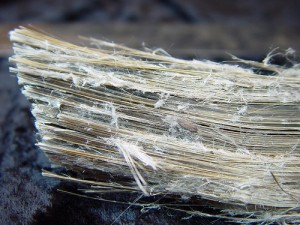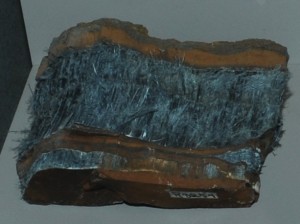Asbestos from the Greek for ‘not quenchable’, is the common name for a variety of naturally occurring silicate minerals that are fibrous in structure. This mineral occurs in many parts of the world, the main sites of commercial asbestos mining and production are; Canada, the Soviet Union and Southern Africa. Asbestos containing rock is crushed and milled at the mining site to produce raw asbestos of various grades. Importation of asbestos is thought to have peaked around 1965 with approximately 175,000 tonnes – Chrysotile (white asbestos) making up about 82% of this total.
Asbestos fibre is mechanically strong and highly resistant to heat and chemical attack and is readily available at a low cost . Because of its fibrous nature asbestos fibre can be woven into fabrics and used as reinforcement for cement and plastics.
Because asbestos is often mixed with another material, it’s hard to know if you’re working with it or not. But, if you work in a building built before the year 2000, it’s likely that some parts of the building will contain asbestos.
Asbestos Types
There are six types of asbestos which fall into two category’s of fibre type. The two asbestos fibre types are Serpentine (curly, wavy fibres) and Amphibole (needle like fibres).
Of the six types of asbestos the three most commercially utilised are;
Chrysotile (White Asbestos – Serpentine) – note the wavy fibres which make it easy woven into textiles such as fuse guards and ropes and often added to cement to increase its strength.
Amosite (Brown Asbestos – Amphibole) – note the needle like fibre bundles, which when disturbed split into tiny fibres which are easily respirable.
and Crocidolite (Blue Asbestos – Amphibole) – is naturally formed into bundles of long, sharp fibres. It has a high-temperature resistance and is extremely resistant to acids.
The other three types of asbestos are amphibole fibre types and are far less common. These are; Anthophylite Asbestos, Tremolite Asbestos and Actinolite Asbestos.
Asbestos strands can be split into smaller and thinner fibres during disturbance. This splitting can continue to microscopic sizes. This process is unique to asbestos and is why airborne asbestos is such a problem.
Asbestos fibres can become so small that they remain airborne longer and pass undetected by the respiratory dust defences causing asbestos diseases such as asbestosis and mesothelioma.




